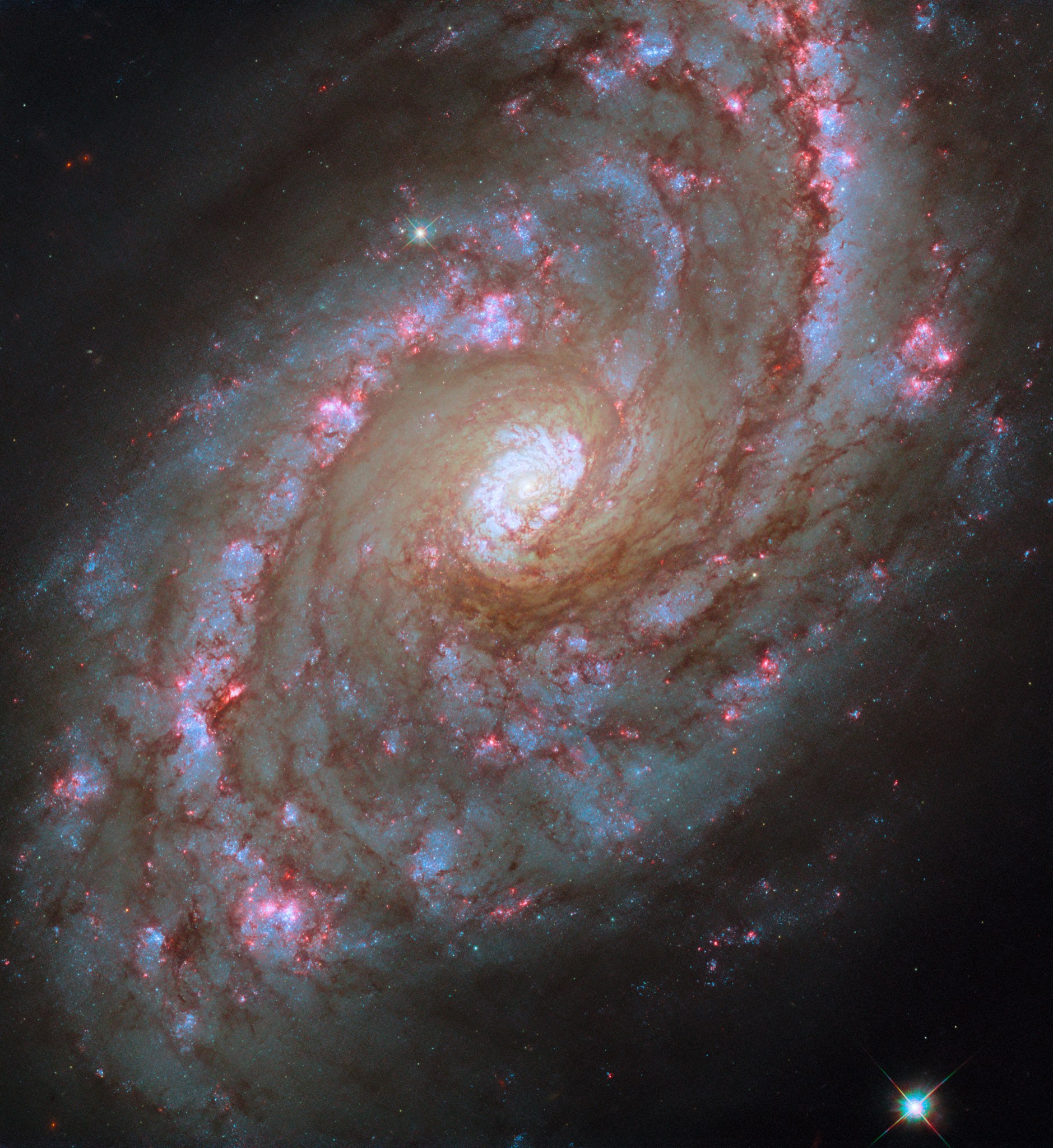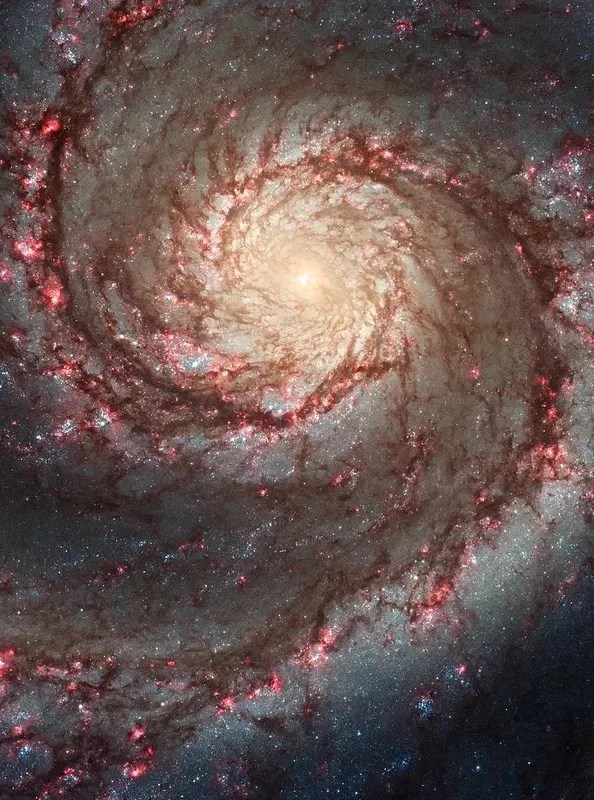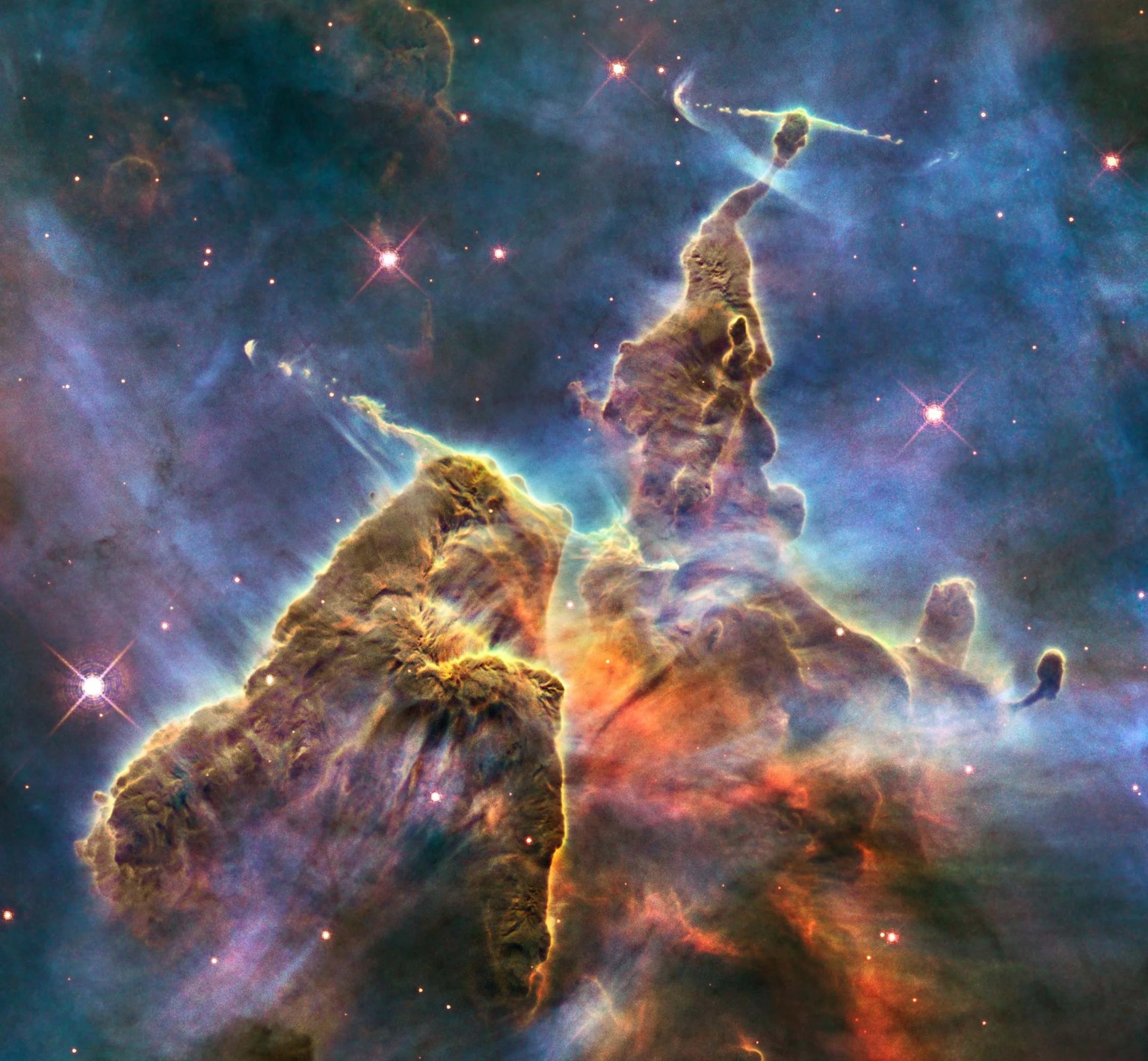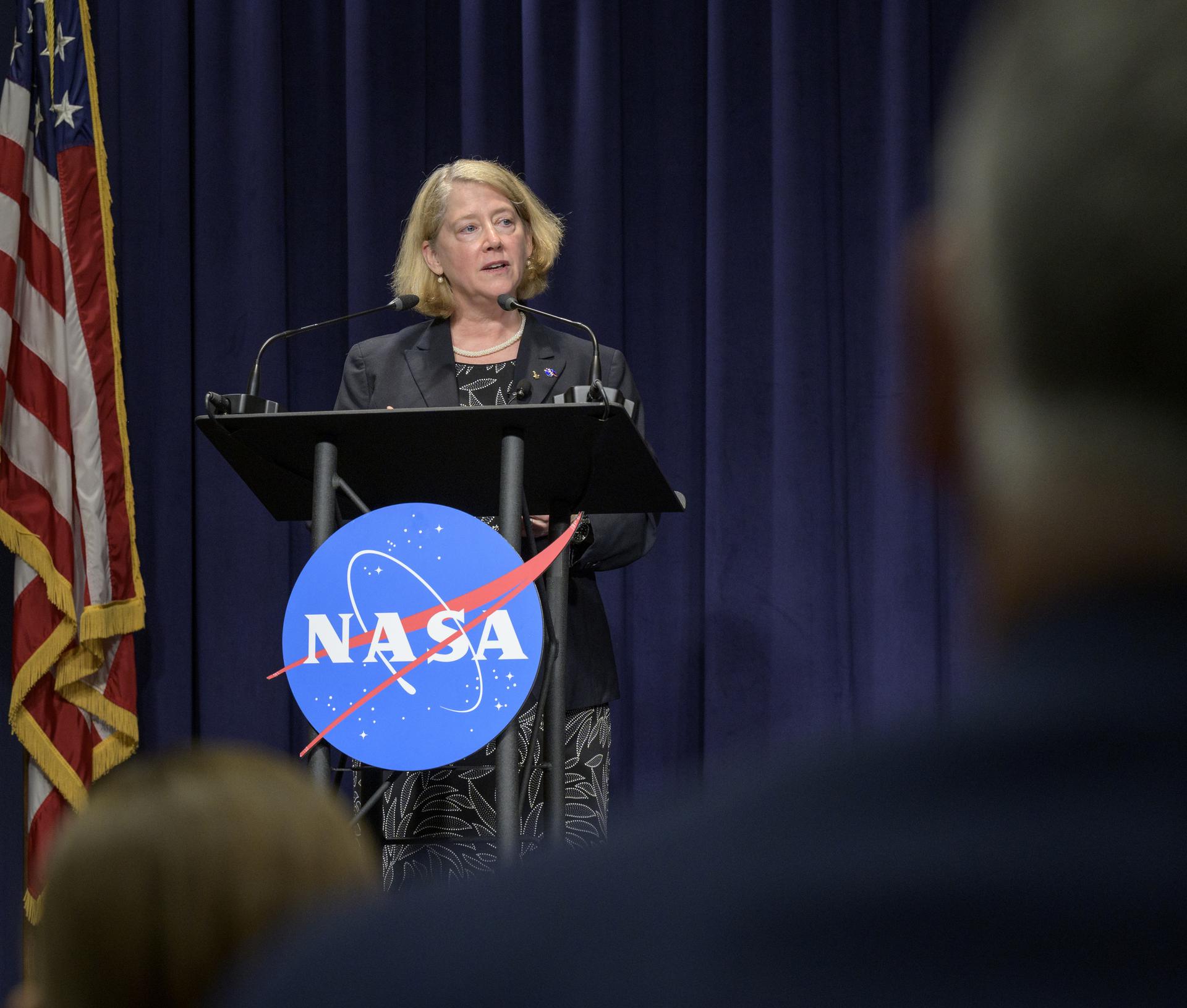Hubble Spots a Grand Spiral of Starbursts
The sparkling scene depicted in this NASA/ESA Hubble Space Telescope image is of the spiral galaxy NGC 5248, located 42 million light-years from Earth in the constellation Boötes. It is also known as Caldwell 45. The Caldwell catalog holds visually interesting celestial objects that are not as commonly observed by amateur astronomers as the more […]
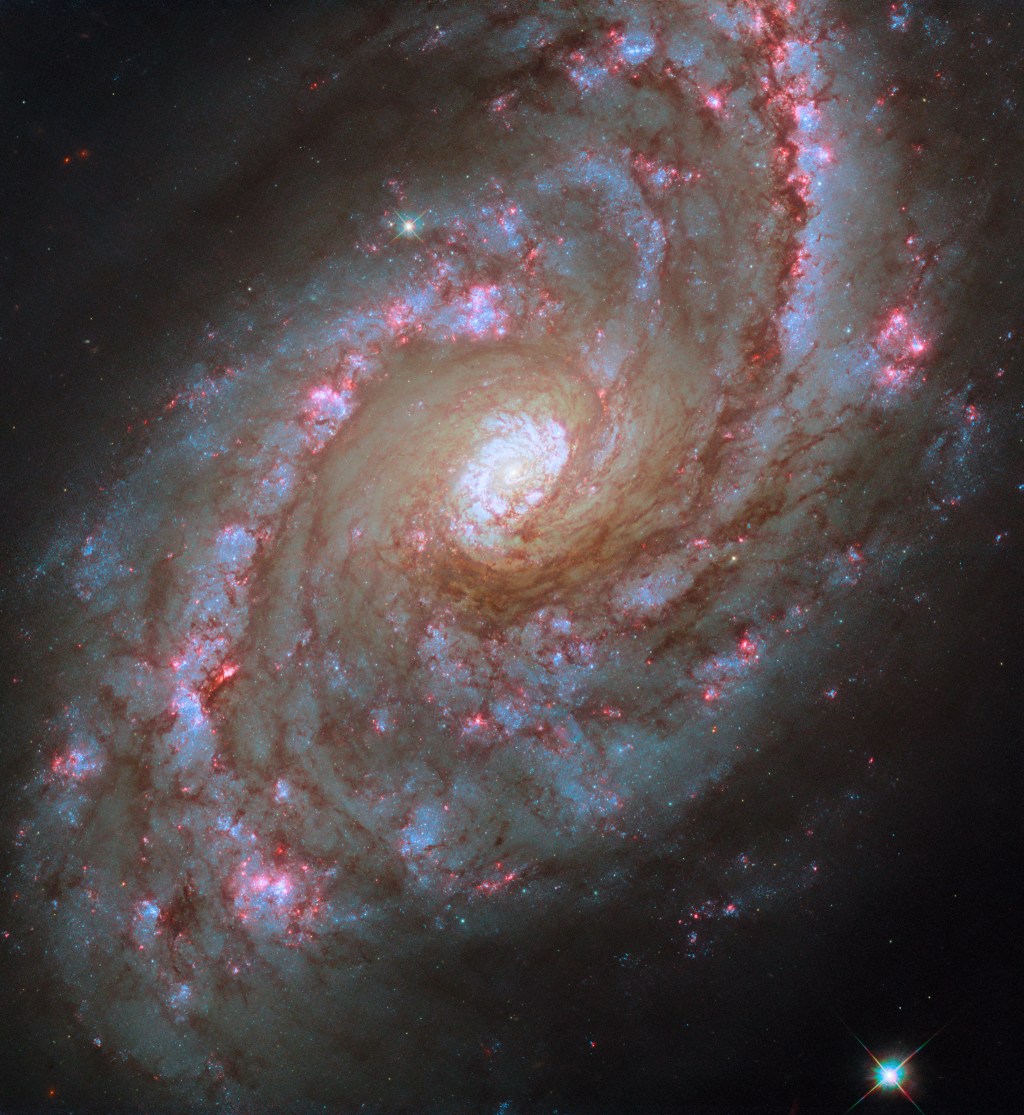
2 min read
Hubble Spots a Grand Spiral of Starbursts
The sparkling scene depicted in this NASA/ESA Hubble Space Telescope image is of the spiral galaxy NGC 5248, located 42 million light-years from Earth in the constellation Boötes. It is also known as Caldwell 45. The Caldwell catalog holds visually interesting celestial objects that are not as commonly observed by amateur astronomers as the more famous Messier objects.
NGC 5248 is one of the so-called ‘grand design’ spirals, with prominent spiral arms that reach from near the core out through the disk. It also has a faint bar structure at its center, between the inner ends of the spiral arms, which is not quite so obvious in this visible-light portrait from Hubble. Features like these which break the rotational symmetry of a galaxy have a huge influence on how matter moves through it, and eventually its evolution through time. They feed gas from a galaxy’s outer reaches to inner star-forming regions, and even to a galaxy’s central black hole where it can kick-start an active galactic nucleus.
These flows of gas have shaped NGC 5248 in a big way; it has many bright ‘starburst regions’ of intense star formation spread across its disk, which a population of young stars dominates. The galaxy even has two very active, ring-shaped starburst regions around its nucleus, filled with young clusters of stars. These ‘nuclear rings’ are remarkable enough, but normally a nuclear ring tends to block gas from getting further into the core of a galaxy. NGC 5248 having a second ring inside the first is a marker of just how forceful its flows of matter and energy are! Because the galaxy is relatively nearby, its highly visible starburst regions make the galaxy a target for professional and amateur astronomers alike.
Media Contact:
Claire Andreoli
NASA’s Goddard Space Flight Center, Greenbelt, MD
claire.andreoli@nasa.gov
What's Your Reaction?































